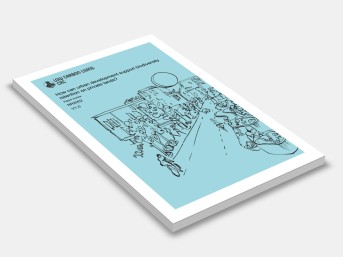How can urban development support biodiversity retention on private lands?: Rapid review
Australian Government
This rapid review identified that most common incentives for biodiversity conservation in urban private properties include:
- Indirect financial incentives
- Payment for ecosystem services
- Market-based certifications
- Community-based initiatives.
Whilst these voluntary incentives are considered effective to encourage biodiversity in private urban properties, they should be integrated with wider conservation efforts to maximise connectivity between habitats. Moreover, household characteristics and individual behaviours have been shown to correlate with the amount of biodiversity in private properties.
It is recommended that incentive strategies to enhance biodiversity on private lands also include the following measures:
- New developments should spatially arrange private gardens and green public spaces to maximise total habitat patch area.
- Biodiversity conservation at a city level should include private gardens and promote habitat heterogeneity.
- Householders and stakeholders operating at different scales should be given different tailored, but complementary, gardening advice.
- Residents should be given education and support to get involved in community and city-scale schemes.
- Marketing and communication strategies for households should be tailored and targeted at different groups, considering specific lifestyle behaviours, demographics, and motivations.
Contents:
Executive Summary
Introduction
Methods
Results
Resources, Workload And Timeline
Supplementary Information
List Of Tables:
Table 1 Specific Search Strings And Filters Applied In Different Databases
Table 2 List Of The Main Study Variables Extracted
Table 3 List And Main Characteristics Of The Included Articles
Table 4 Summary Of Article Findings And Authors’ Recommendations For The Included Studies
Table 5 Quality Scores (Qs) And Risk Of Bias (Rob) Summaries For The Included Studies
Table 6 Review Timeline
Table 7 Workloads (In Hours) Of The Team Members For Each Main Review Stage
Table 8 Table Of The Excluded Studies At The Full-Text Eligibility Stage
Table 9 Quality Assessment Tool
Table 10 Responses To Quality Assessment Questions From Table 9 Coded For Each Of The Included Studies
List Of Figures:
Figure 1 Prisma Diagram Of The Search And Screening Process
Figure 2 Review Team Members
